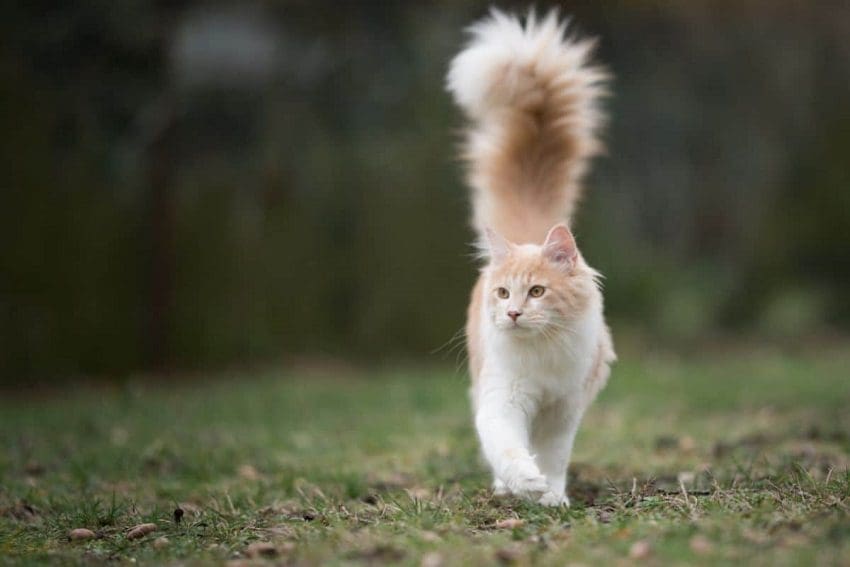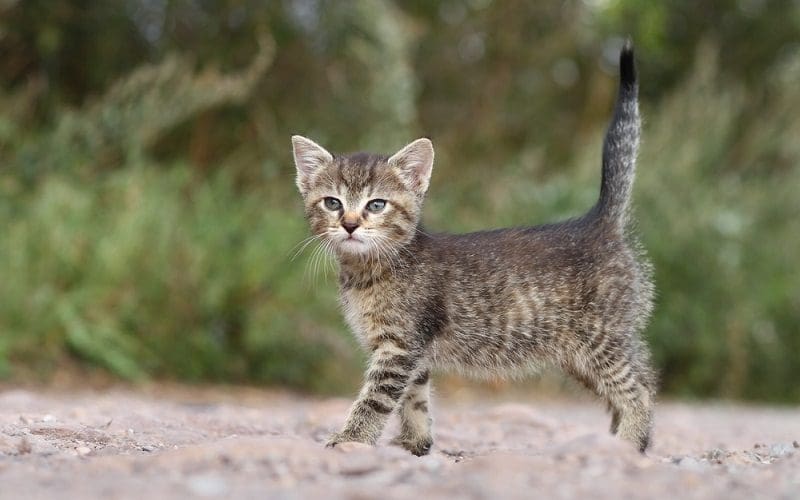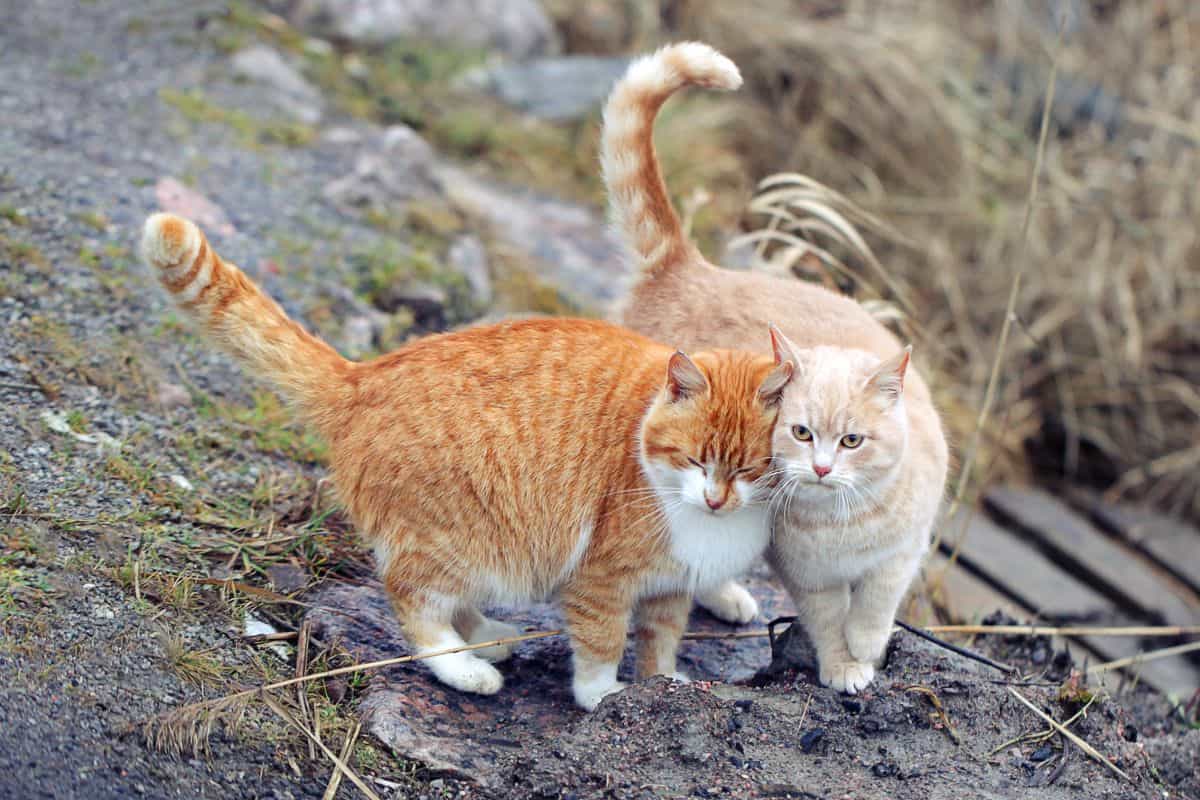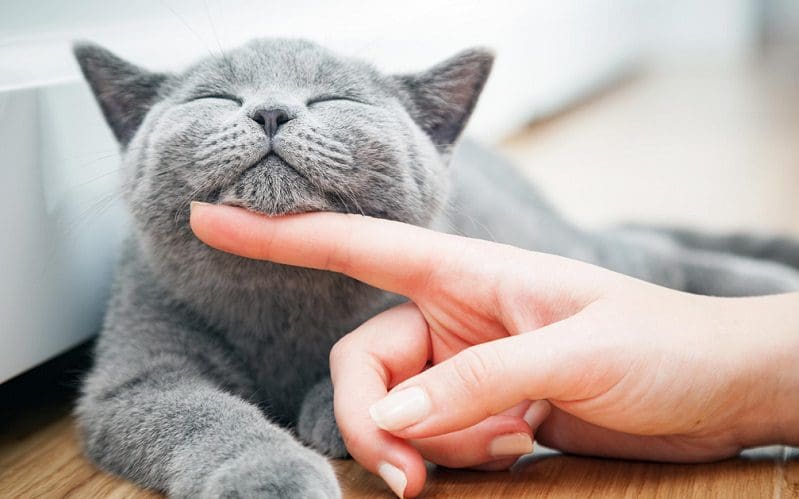Last Updated: 11 months ago
Cats are great at communicating with us. But unfortunately, most people aren’t able to communicate with their feline friends!
This is because cats don’t just communicate with their voices but also through their body language.
One of the main ways that cats communicate with us is through their tails. If you have a cat, you may have noticed that its tail is vibrating.
So, why do cats vibrate their tails?
A cat that is vibrating its tail might be trying to communicate something to you, but the meaning can be different depending on the movement of the tail.
Let’s find the meaning behind this strange tail movement!
Why Do Cats Vibrate Their Tails?

A cat with a vibrating tail can either be in a good or bad mood.
Tails can be used to depict a wide assortment of emotions, such as excitement or irritation.
- Contentment: When a cat is content and relaxed, it may vibrate its tail gently as a sign of happiness. This subtle movement is often accompanied by other relaxed body language, indicating that the cat feels secure and at ease.
- Affection: Cats may vibrate their tails when showing affection towards their owners or other animals. This affectionate tail quiver is a way for cats to express their positive emotions and reinforce social bonds.
- Playfulness: During play, cats may exhibit tail vibrations as a part of their overall excitement. This behavior is common when they are engaged in interactive games, chasing toys, or interacting with other cats.
- Anticipation: Cats may vibrate their tails when anticipating something exciting, such as mealtime or a favorite activity. It’s a form of expression that signals their anticipation and eagerness.
- Nervousness or Anxiety: In some cases, tail vibrations can indicate nervousness or anxiety in cats. If a cat is in an unfamiliar or stressful environment, it may exhibit this behavior as a response to discomfort or unease.
- Agitation or Irritation: Cats may also vibrate their tails as a warning sign when they are agitated or irritated. This can be a precursor to more overt signs of displeasure, such as hissing or swatting.
- Medical Issues: In certain instances, tail vibrations might be associated with medical issues or discomfort. It’s essential to observe the overall behavior and health of the cat, as persistent or unusual tail vibrations may warrant a vet visit.
Understanding the context and accompanying body language is crucial in interpreting why a cat may vibrate its tail, as it can vary based on the situation and the individual cat’s personality.
1. Erratic Vibrating Tail
A cat with an erratic, vibrating tail is hard to understand. Usually, this action represents excitement.
On the other hand, this can also illustrate anger.
This is particularly true if your cat is flicking their tail, which is considered a sign of aggression.
You may want to give your cat some space.
2. Pointing Vibrating Tail

Often, when the tail of a cat is pointed upward, this is a good sign. It usually signifies that a cat is in a happy mood.
They may even be happy to see you!
Alternatively, your cat could do this just before you give them food, or they could play with a toy.
Essentially, this body language symbolizes a cherry and a welcoming disposition.
This is the perfect time to cuddle up to your cat.
3. Vibrating Tail And Fur On End
This is usually an indication that a cat feels threatened. Cats tend to have upright fur when they have been startled.
This is because it makes them look larger, thus creating a more imposing figure that may scare off attackers.
Therefore, if your cat has their fur on end at the same time as its tail is vibrating, it could mean that they feel scared or angry.
To solve this problem, you might want to find out what is causing these emotions.
What Can You Do?

Your best bet is to try and work out what emotion your cat is experiencing by using the pointers above.
This way, you can adjust your response to your cat’s emotions. If your cat seems to be anxious, you should attempt to make them feel safe.
This can include making a comfortable area for your cat where they can sleep. Pheromone diffusers may also reduce your cat’s anxiety levels.
Meanwhile, if your cat is excited or happy, there is no reason for you to worry. Instead, it is best to just let your cat enjoy itself!
Though it can be hard to understand cats, since they are notoriously skittish, you will likely get a good grasp of your cat’s emotions as you get to know them better.
If you are nervous about your cat’s continuously vibrating tail, you may want to mention it at your next vet appointment.
What Should You Avoid Doing?

When your cat is anxious or stressed, your first instinct may be to comfort them.
Though some cats may appreciate this, other cats may not. This could be because you are the root of their anxiety.
This tends to be the case when a cat meets a new owner or moves into a new space. If this is the case, it is recommended that you leave the cat alone.
Otherwise, your attempts to comfort them may only increase their anxiety.
Though this goes without saying, never intentionally make your cat feel scared or stressed. It is best to refrain from touching your cat’s tail.
Though every cat will have a different response, most cats do not enjoy having their tails touched, even if it is intended as a sign of affection.
The majority of cats are protective about their tails and may attack you if provoked.
Final Thoughts
Though it can be challenging to understand what your cat is going through, learning to understand the movement of their tails can improve your relationship with your feline companion.
These simple movements, such as the vibrating of a tail, can symbolize a plethora of emotions, whether positive or negative!
